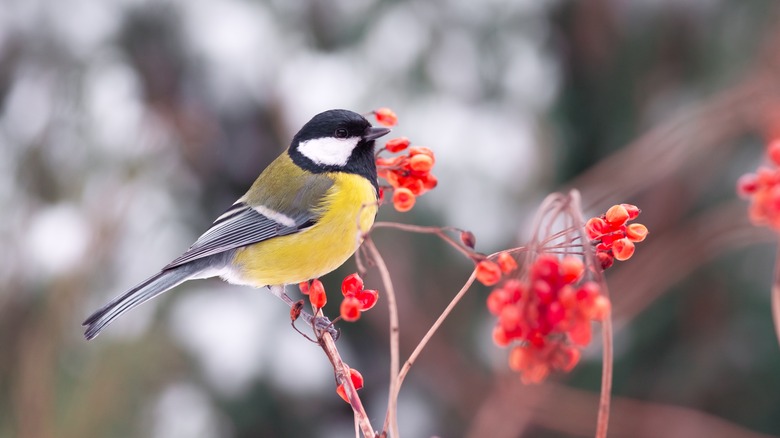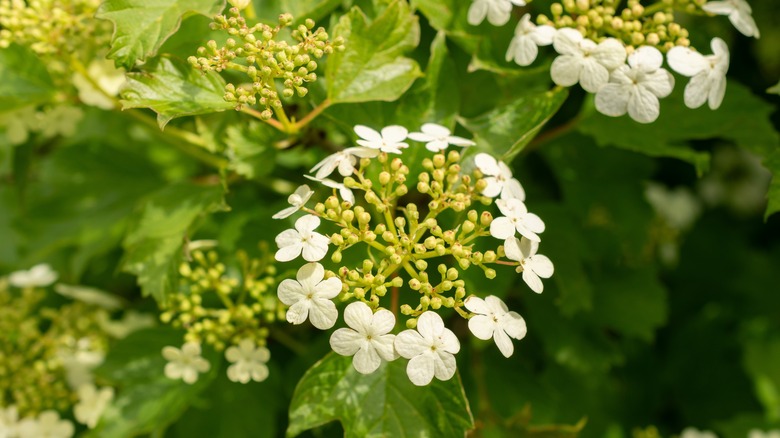Guelder Roses Are Beautiful But Think Twice Before Planting Them To Attract Birds
If one of your backyard goals is to attract birds to your garden, there are a host of blooming plants and shrubs with the potential to draw feathered visitors. The guelder rose (Viburnum opulus) might seem like one of them. Since it grows into a large shrub (7 to 12 feet tall), it's the type of plant that can become a safe haven for birds as its branches fill with jagged leaves similar to maples and large flower heads with white blooms. By the time August rolls around, the flowers produce bright scarlet berries that birds like bullfinches and mistle thrushes enjoy munching on. However, in several states — Indiana, Pennsylvania, and Wisconsin, specifically — these flowering shrubs are considered invasive.
What's the problem with them? These plants originated in forested areas of Europe and northern regions of Asia and Africa, so they are not native to the United States and really looked upon as weeds. Because birds eat their berries and then carry the seeds miles and miles away, guelder roses spread easily and choke out native plants as they compete for sunlight and space. This makes conservationists who worry that they'll take over rare biomes uneasy since they can thrive in a vast range of environments. So, while adding berried plants to your garden to attract birds can be a good idea if you want more of them to visit, consider finding a native alternative to guelder roses.
Tips for recognizing and controlling guelder roses
Identifying guelder roses when they're sprouting as young plants requires looking very closely at the end of their leaf stalks. The glands on these plants are concave in shape, meaning they have depressions shaped like saucers in them. The easiest way to control guelder roses is to remove them from your yard or wooded areas adjacent your home when they're less than 3 feet in height. At that level, you should be able to rip them out of the ground by hand before the roots take hold. If you don't take care of one until it's much larger, it will require cutting to the ground and treating the roots to keep the shrub from growing back. If you apply a glyphosate herbicide right after cutting down a guelder rose, that should do the trick. Remember to always follow the instructions on any herbicide you use.
Once you're sure guelder roses aren't a problem, what can you plant instead? A native plant relative like the American cranberry bush (Viburnum opulus var. americanum) can provide the same look as well as shelter and berries for birds without the worries that come with encouraging an invasive plant to spread. One of the things to be aware of, however, is that guelder roses are sometimes mislabeled at garden centers as American cranberry bushes (which have convex-shaped leaf glands instead of concave), so be sure you learn to recognize both when they're immature to avoid an invasive planting mistake.

